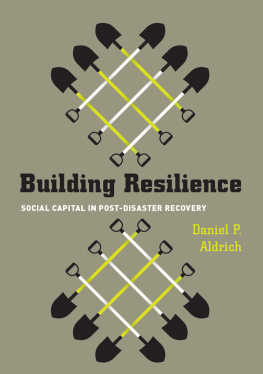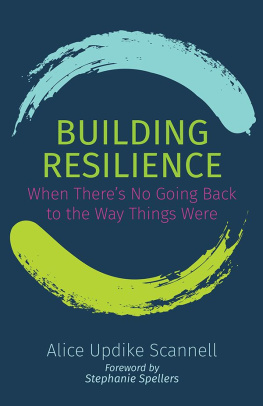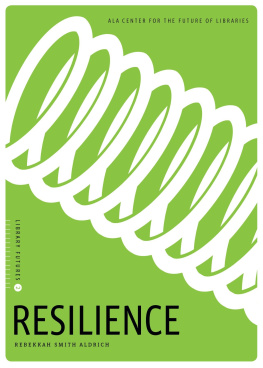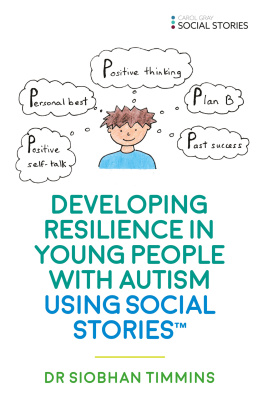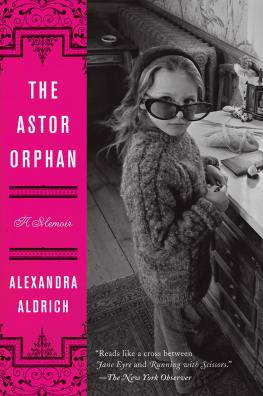Daniel P. Aldrich is associate professor of political science at Purdue University. He is the author of Site Fights: Divisive Facilities and Civil Society in Japan and the West.
The University of Chicago Press, Chicago 60637
The University of Chicago Press, Ltd., London
2012 by The University of Chicago
All rights reserved. Published 2012.
Printed in the United States of America
21 20 19 18 17 16 15 14 13 12 1 2 3 4 5
ISBN-13: 978-0-226-01287-2 (cloth)
ISBN-13: 978-0-226-01288-9 (paper)
ISBN-13: 978-0-226-01289-6 (e-book)
ISBN-10: 0-226-01287-5 (cloth)
ISBN-10: 0-226-01288-3 (paper)
ISBN-10: 0-226-01289-1 (e-book)
Library of Congress Cataloging-in-Publication Data
Aldrich, Daniel P.
Building resilience : social capital in post-disaster recovery / Daniel P. Aldrich.
pages ; cm
Includes bibliographical references and index.
ISBN-13: 978-0-226-01287-2 (cloth : alkaline paper)
ISBN-10: 0-226-01287-5 (cloth: alkaline paper)
ISBN-13: 978-0-226-01288-9 (paperback : alkaline paper)
ISBN-10: 0-226-01288-3 (paperback: alkaline paper)
[etc.]
1. Disaster reliefSocial aspects. 2. Disaster reliefCitizen participation. 3. Disaster victimsSocial networks. 4. Social capital (Sociology). 5. Social action. I. Title.
HV553.A45 2012
363.34'8dc23
2011050821

This paper meets the requirements of ANSI/NISO Z39.48-1992 (Permanence of Paper).
Preface
Whereas some scholarship might be dry, written from a distant position in a detached ivy-covered tower, this book was written wetfiguratively and literally. In mid-July 2005 my family moved to New Orleans, where I was to begin an assistant professorship at Tulane University. Only six weeks later, at 4:00 a.m. on Sunday, 28 August, my wife and I packed our two small children into our van and drove west to Houston to seek shelter as the rains of Hurricane Katrina began to fall. Heeding the warning of a concerned neighbor who realized we had no experience with the realities of life on the Gulf Coast, we had crammed three days clothing into a suitcase, snatched up our slow cooker and some photographs, and left behind our rented house filled with new furniture, books, clothes, computers, and records, as well as our second car (a gift from my parents). By noon on Monday, we and other evacuees who were crowded into a motel at the edge of Houston were transfixed by the grainy television images of broken levees. Thereafter, the eleven feet of water that rushed into our New Orleans neighborhood of Lakeview from the nearby Seventeenth Street Canal sat stagnant for almost three weeks, destroying all our possessions and ripping apart the community that had so recently become part of our daily lives.
Although we immediately applied to the Federal Emergency Management Agency for assistance, our initial applications were denied, and we received essentially nothing until our multiple appeals were finally answered in March 2006. Because we had so recently arrived in the Big Easy, we had not had time to activate flood insurance or renters insurance; hence we had no coverage for our possessions or property. During that period I had a chance to reflect on the course of recoveryas individuals, as a family, and as a community; I started to read the work of disaster experts to examine their analyses of past crises. There was little agreement on what conditions promote a more effective and efficient recovery. Given this lack of consensus, I concurred with other scholars who argued that it was extremely important to determine what factors impact the recovery process (Rodriguez et al. 2006, 171). After Hurricane Katrina, I had a chance to see firsthand exactly how individuals, neighborhoods, and cities door do notrecover after natural disasters. In my own familys experience, it was friends, friends of friends, acquaintances, and family who did the most for us; subsequently I have found that disaster survivors around the world tell stories remarkably similar to ours. Then, as I completed the first draft of this book, a tremendous earthquake and tsunami struck northeastern Japan on 11 March 2011, and I heard the same narrative from friends and colleagues in Tokyo and around the country.
A great deal of academic work has focused on disasters (Oliver-Smith and Hoffman 1999; Vale and Campanella 2005; Chamlee-Wright 2010; Kage 2011; see Valelly 2004; Tierney 2007; and Aldrich 2011 for overviews). Another tremendous body of literature has focused on social capitalthe ties that bind people together (Cohen and Arato 1992; Putnam 1993, 1995, 2000; Castiglione, van Deth, and Wolleb 2008) even in the contentious processes of nonviolent conflict (Chenoweth and Stephan 2011). All of us recognize the role that networks and personal contacts have in our professional and personal lives, but scholarship on disasters and government decision makers has been slow to integrate this concept into its theoretical frameworks. This book brings these two critical concepts together to understand how social resources influence post-disaster recovery. Using extensive studies of four major disasters in the twentieth century, it uncovers how social networks and connections form the core engine of recovery after even the most devastating of events.
While many government disaster mitigation and recovery programs are predicated on the idea that the amount of aid provided and the amount of damage caused by the disaster are important, I bring quantitative and qualitative evidence demonstrating that social resources, at least as much as material ones, prove to be the foundation for resilience and recovery. Some scholars have suggested that social resources are important for recovery (Nakagawa and Shaw 2004; Dynes 2005), but Koh and Cadigan have called for an investigation that should verify and extend these concepts, offer more quantitative assessments of social capital as applied to disasters, [and] demonstrate their utility through more rigorous analyses (2008, 283). Others have argued more pointedly that no empirical studies demonstrate that building social connectedness among community resident results in community resilience (Chandra et al. 2010, 23). This book responds to these challenges, applying cutting-edge methodologies to new data. I show that neighborhoods with higher levels of social capital work together more effectively to guide resources to where they are needed. Individuals who are connected to extralocal organizations and decision makers prove more resilient because those networks remain robust even after a local crisis. Survivors borrow tools from each other, use their connections to learn about new bureaucratic requirements and procedures, and collaborate to organize community watch organizations.
These results have profound implications not only for future research on social capital and disasters, but also for nongovernmental organizations (NGOs), bureaucrats, and politicians in guiding resource allocation. Today, common approaches to disaster recovery still remain rooted in a 1950s paradigm of physical infrastructure, focusing on the rebuilding of bridges, power lines, homes, roads, and shops. While material-based assistance is importantand certainly saves lives in the short runalone it will not contribute to long-term resilience in communities subject to past or future crises. Social capital, like other resources, can be nurtured through both local initiatives and foreign interventions. In the future, disaster mitigation programs (such as those analyzed by Swaroop 1992) will need to better integrate physical infrastructure and social infrastructure.
 This paper meets the requirements of ANSI/NISO Z39.48-1992 (Permanence of Paper).
This paper meets the requirements of ANSI/NISO Z39.48-1992 (Permanence of Paper).
